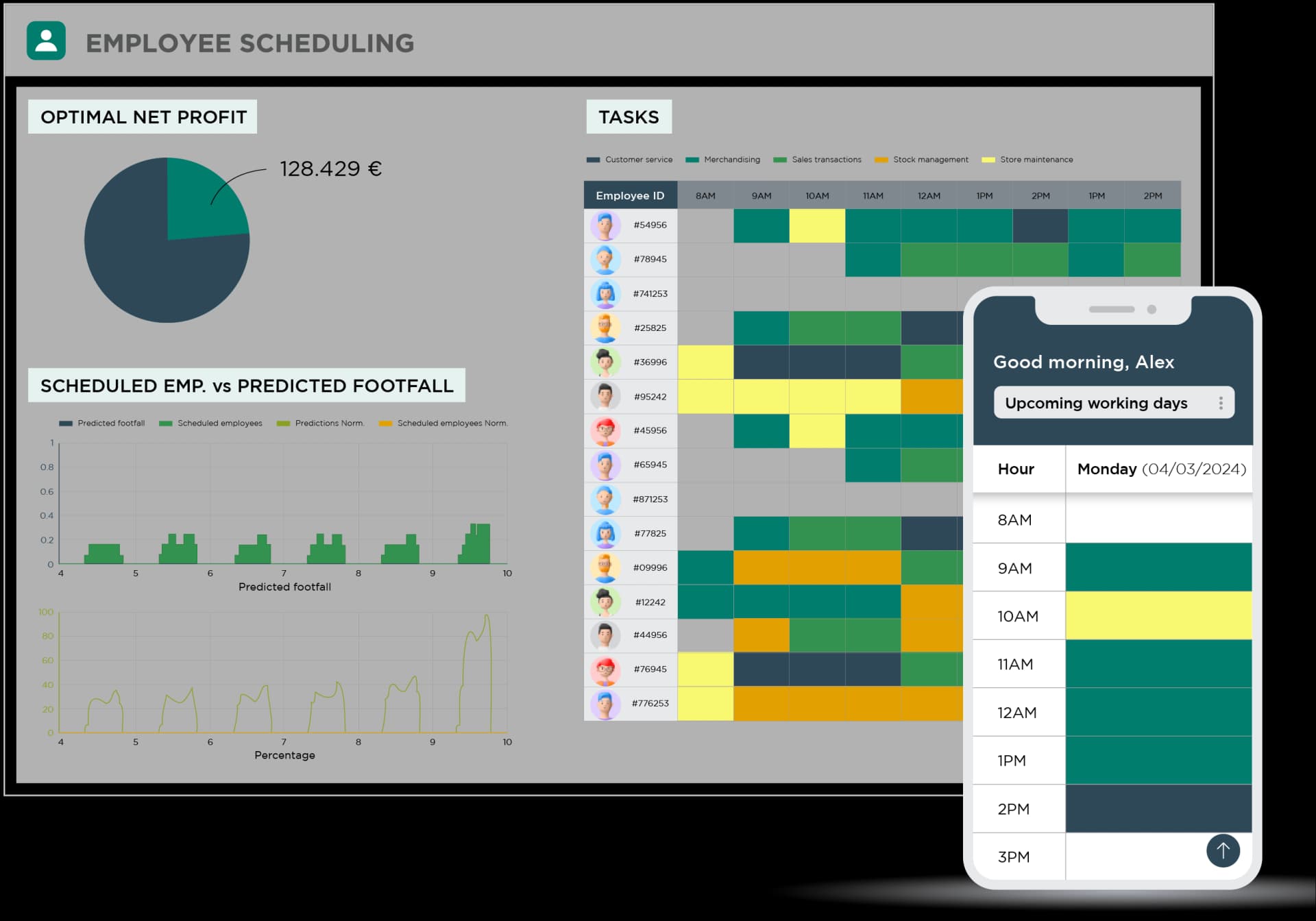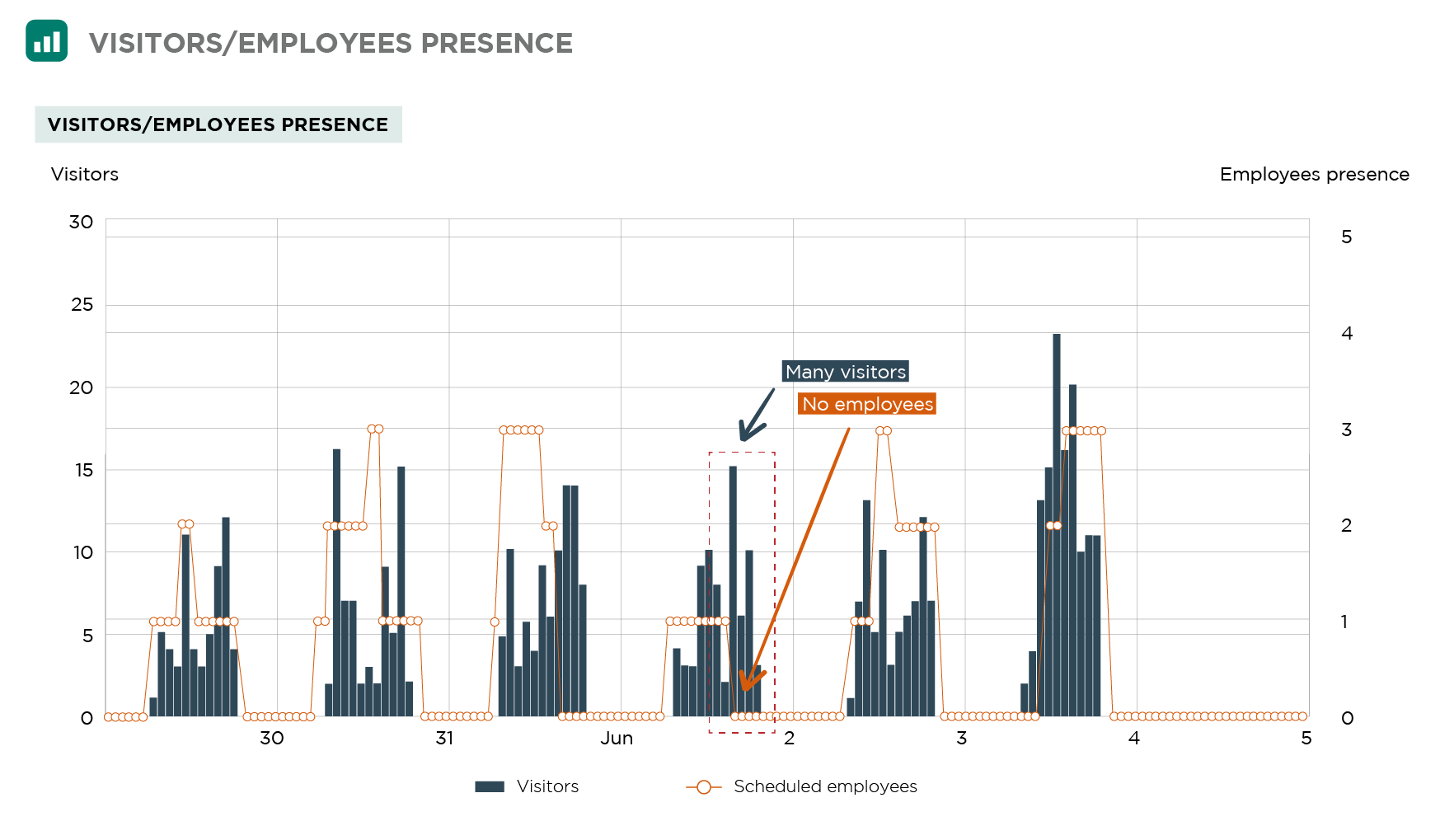Employee Scheduling

Lost Sales
Thanks to Ariadne's employee insights, you can now monitor lost opportunities due to poor employee schedule for every hour of the day and every day of the week.
This is thanks to the optimal schedule that Ariadne produced, and it is tuned to maximize the conversion rate of every product area. Specifically, Ariadne enables you to identify every single hour in your employee schedule where and when an opportunity might occur.
IDENTIFY
when a product can be self-served
SEE
what effect employees can make on selling a product
UNDERSTAND
the skill of the employees on converting














